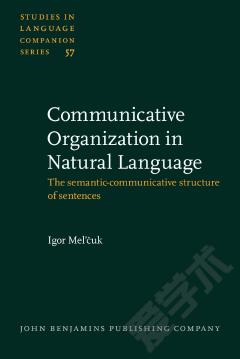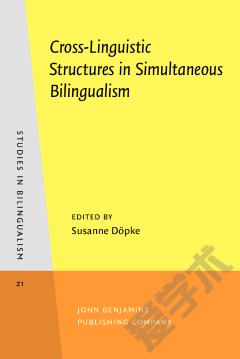Communicative Organization in Natural Language. The semantic-communicative structure of sentences.
The book defines the concept of Semantic-Communicative Structure [= Sem-CommS]-a formal object that is imposed on the starting Semantic Structure [= SemS] of a sentence (under text synthesis) in order to turn the selected meaning into a linguistic message. The Sem-CommS is a system of eight logically independent oppositions: 1. Thematicity (Rheme vs. Theme), 2. Givenness (Given vs. Old), 3. Focalization (Focalized vs. Non-Focalized), 4. Perspective (Foregrounded vs. Backgrounded), 5. Emphasis (Emphasized vs. Non-Emphasized), 6. Presupposedness (Presupposed vs. Non-Presupposed), 7. Unitariness (Unitary vs. Articulated), 8. Locutionality (Communicated vs. Signaled). The values of these oppositions mark particular subnetworks of the starting SemS and thus allow for the distinction between sentences such as (a) A man killed a dog vs. The dog was killed by a man, (b) John washed the window vs. It was John who washed the window or (c) It hurts! vs. Ouch! The proposed Sem-Comm-oppositions are conceived as an attempt at sharpening the well-known notions of Topic ~ Comment, Focus, etc. Possible linguistic strategies for expressing the values of the Sem-Comm-oppositions in different languages are discussed at some length, with linguistic illustrations.
{{comment.content}}








 京公网安备 11010802027623号
京公网安备 11010802027623号